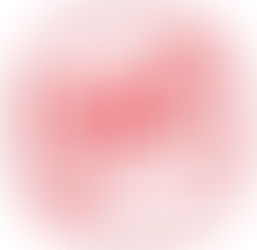The Hidden Truth About Vegetable Emulsifying Wax: Cheap, Convenient, and Toxic?
- V. DuPree, LMT, CMLDT, CLT, CFT
- Jan 2
- 3 min read

When you see "vegetable emulsifying wax" listed on the label of your favorite skincare product, you probably imagine something wholesome and natural, right? After all, the word “vegetable” evokes images of lush gardens, fresh produce, and nature’s bounty. But what if I told you this seemingly harmless emulsifier has a dark side that the beauty industry conveniently ignores? Buckle up, because what you’re about to learn might make you rethink your skincare routine entirely.
What is Vegetable Emulsifying Wax?
Vegetable emulsifying wax is a widely used ingredient in lotions, creams, and other emulsified products. It serves as the glue that binds water and oils together to create the smooth textures we love. The key allure? It’s dirt cheap, stable, and effective. But what’s lurking beneath its innocuous name might surprise you.
Despite its “vegetable” branding, vegetable emulsifying wax is far from natural. It’s a blend of synthetic and semi-synthetic chemicals, not some organic concoction pressed from leafy greens. In fact, it’s composed of the following four primary ingredients:
Cetearyl Alcohol
Polysorbate 60
PEG-150 Stearate
Steareth-20
Let’s break these down and uncover why this mix is more sinister than it seems.

The Four Ingredients Revealed
1. Cetearyl Alcohol
A combination of cetyl and stearyl alcohols derived from fats, Cetearyl Alcohol isn’t inherently harmful. It acts as an emollient, giving products their creamy consistency. However, when processed in the presence of other chemicals, it can sometimes carry contaminants like 1,4-dioxane, a byproduct linked to cancer.
2. Polysorbate 60
Polysorbate 60 is an emulsifier derived from sorbitol and fatty acids. However, the process to create Polysorbate 60 often involves ethylene oxide, which can introduce carcinogenic contaminants like 1,4-dioxane and ethylene oxide itself. Both are classified as probable or known human carcinogens by the International Agency for Research on Cancer (IARC).
3. PEG-150 Stearate
Part of the polyethylene glycol (PEG) family, PEG-150 Stearate acts as a thickening agent and surfactant. Like Polysorbate 60, it’s often contaminated with 1,4-dioxane during manufacturing. Prolonged exposure to PEG compounds has been linked to skin irritation and organ toxicity, and their potential contamination adds to the risk.
4. Steareth-20
Here’s where things get chilling. Steareth-20 is created through a process known as ethoxylation, which uses ethylene oxide—a chemical infamously used in Agent Orange, the toxic herbicide sprayed during the Vietnam War. Residues of ethylene oxide in Steareth-20 pose significant health risks, as the chemical is a known human carcinogen.

The Cancer Connection
Let’s get one thing straight: None of these ingredients are guaranteed to cause cancer on their own in every instance. However, the manufacturing processes and potential contaminants make them far from safe. Ingredients like Polysorbate 60, PEG-150 Stearate, and Steareth-20 are frequently contaminated with 1,4-dioxane and ethylene oxide, both of which are well-documented carcinogens.
According to the Environmental Working Group (EWG), 1,4-dioxane is banned in Canada and the EU in certain cosmetic applications due to its toxicity. Yet, in the U.S., it’s still found in a wide range of personal care products. What’s worse? These contaminants don’t show up on ingredient labels because they’re considered byproducts rather than primary ingredients.
Why Do Manufacturers Use It?
The answer is simple: cost and convenience. Vegetable emulsifying wax is incredibly cheap and widely available. For small and large manufacturers alike, it offers a quick way to create stable emulsions without breaking the bank. Many manufacturers either don’t understand the toxic potential of its components or turn a blind eye in favor of higher profit margins. The result? A flood of products containing questionable ingredients disguised under “greenwashed” marketing terms.

What Can You Do?
Read Labels Carefully: Be wary of vague or misleading terms like “vegetable emulsifying wax.” Look for transparency in ingredient lists.
Choose Truly Natural Products: Opt for brands committed to using natural, unprocessed emulsifiers like beeswax, lecithin, or plant-based alternatives.
Do Your Research: Cross-check ingredients against reputable sources like the EWG Skin Deep Database to identify potential risks.
Demand Accountability: Support brands that prioritize safety and sustainability over profit.

Conclusion
Vegetable emulsifying wax may sound innocent, but its composition and manufacturing process paint a different picture. Cheap, convenient, and widely used, it embodies the darker side of the beauty industry—an industry that often prioritizes profit over safety. By educating yourself and making conscious choices, you can steer clear of harmful chemicals and support brands that truly care about your health.
Sources:
Environmental Working Group (EWG): www.ewg.org
International Agency for Research on Cancer (IARC): www.iarc.fr
National Toxicology Program (NTP): ntp.niehs.nih.gov




















